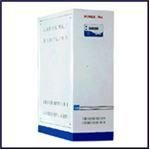Click Like and Share if you like what you see
Russia 2018 World Cup Preview: Russia vs Saudi Arabia Read more: https://www.naija.ng/1175133-russia-2018-world-cup-preview-russia-saudi-arabia.html?source=notification#1175133
Russia 2018 World Cup Preview: Russia vs Saudi Arabia Author: Akan Anwankwo UPDATED: 4 HOURS AGO VIEWS: 13671 Category: Sports, Football News, World News, Russia 2018 FIFA WORLD CUP - Russia will begin their World Cup campaign against Saudi Arabia - Both teams have had poor run of matches coming into the tournament - The teams will be meeting for the second time in their history The long wait for the Russia 2018 FIFA World Cup will begin today, June, 14, as the host nation, Russia, will be slugging it out with Saudi Arabia in the opening fixture. Both teams will be vying for honours in Group A alongside North African side Egypt and South America power house Uruguay. Russia have had a poor run of form losing seven games in a row and their last win was against South Korea last October. READ ALSO: Chelsea move a step closer in landing Sarri at Stamford Bridge Saudi Arabia on the other hand, have also lost three straight friendlies to Italy, Peru and Germany as both sides will be looking to end their winless streak. PAY ATTENTION: Click on link to get World Cup fixtures on NAIJ.com History favours the Eastern European going into this match as no host nation have lost their opening fixture in the biggest football showpiece. PAY ATTENTION: Click on link to get World Cup results and standings on NAIJ.com However, both teams have played just once as the Middle East nation recorded a commanding 4-2 victory in a friendly match. Possible line-ups Russia: Igor Akinfeev; Mario Fernandes, Fedor Kudryashov, Sergey Ignashevich, Yuri Zhirkov; Roman Zobnin, Daler Kuzyaev, Alan Dzagoev, Aleksandr Samedov, Aleksandr Golovin; Fedor Smolov Saudi Arabia: Abdullah Al-Mayouf; Usamah Husawi, Omar Hosawi, Yasser Al-Shahrani, Mohammed Al-Barik; Abdullah Otif, Salman Al-Faraj, Yahya Al-Shihri, Taisir Al-Jassim, Salem Al Dosari; Fahad Al-Molad Time: 4pm (Nigerian time) Date: Thursday, June, 14 Venue: Luzhniki Stadium, Moscow Which Nigerian player do you expect to shine at the Russia 2018 World Cup? (Street Gist) - on NAIJ.com TV SUBSCRIBE TO WATCH NEW VIDEOS Source: Naija.ng Read more: https://www.naija.ng/1175133-russia-2018-world-cup-preview-russia-saudi-arabia.html?source=notification#1175133

Russia 2018 World Cup Preview: Russia vs Saudi Arabia Read more: https://www.naija.ng/1175133-russia-2018-world-cup-preview-russia-saudi-arabia.html?source=notification#1175133
Russia 2018 World Cup Preview: Russia vs Saudi Arabia Author: Akan Anwankwo UPDATED: 4 HOURS AGO VIEWS: 13671 Category: Sports, Football News, World News, Russia 2018 FIFA WORLD CUP - Russia will begin their World Cup campaign against Saudi Arabia - Both teams have had poor run of matches coming into the tournament - The teams will be meeting for the second time in their history The long wait for the Russia 2018 FIFA World Cup will begin today, June, 14, as the host nation, Russia, will be slugging it out with Saudi Arabia in the opening fixture. Both teams will be vying for honours in Group A alongside North African side Egypt and South America power house Uruguay. Russia have had a poor run of form losing seven games in a row and their last win was against South Korea last October. READ ALSO: Chelsea move a step closer in landing Sarri at Stamford Bridge Saudi Arabia on the other hand, have also lost three straight friendlies to Italy, Peru and Germany as both sides will be looking to end their winless streak. PAY ATTENTION: Click on link to get World Cup fixtures on NAIJ.com History favours the Eastern European going into this match as no host nation have lost their opening fixture in the biggest football showpiece. PAY ATTENTION: Click on link to get World Cup results and standings on NAIJ.com However, both teams have played just once as the Middle East nation recorded a commanding 4-2 victory in a friendly match. Possible line-ups Russia: Igor Akinfeev; Mario Fernandes, Fedor Kudryashov, Sergey Ignashevich, Yuri Zhirkov; Roman Zobnin, Daler Kuzyaev, Alan Dzagoev, Aleksandr Samedov, Aleksandr Golovin; Fedor Smolov Saudi Arabia: Abdullah Al-Mayouf; Usamah Husawi, Omar Hosawi, Yasser Al-Shahrani, Mohammed Al-Barik; Abdullah Otif, Salman Al-Faraj, Yahya Al-Shihri, Taisir Al-Jassim, Salem Al Dosari; Fahad Al-Molad Time: 4pm (Nigerian time) Date: Thursday, June, 14 Venue: Luzhniki Stadium, Moscow Which Nigerian player do you expect to shine at the Russia 2018 World Cup? (Street Gist) - on NAIJ.com TV SUBSCRIBE TO WATCH NEW VIDEOS Source: Naija.ng Read more: https://www.naija.ng/1175133-russia-2018-world-cup-preview-russia-saudi-arabia.html?source=notification#1175133



